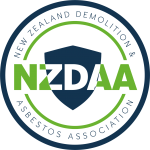Growing evidence that the air we breathe in our homes, schools and offices is an overlooked but potentially huge health threat has prompted calls for new standards.
A major report published by the Government last week found our greatest exposure to outdoor air might occur indoors, as it infiltrated buildings where Kiwis who live in cities spend around 90 per cent of their time.
New Zealand’s air quality is generally measured by the level of particulate matter (PM) that we send into the atmosphere, mostly through warming our homes in winter with wood and coal, or pumping nitrogen dioxide from our car exhausts.
The report highlighted how closeness to roadways had been linked with high indoor levels of traffic-related pollutants.
Further, it found the proportion of smaller-sized PM indoors could be even higher, especially in communities with a high number of wood burners, because fine particles were more capable of infiltrating cracks and gaps.
That was on top of pollution created from within buildings through cooking, household dust, too much moisture, cleaning products, tobacco, pets and even carpet and furniture.
Pollutants included volatile organic compounds (VOCs) like benzene or formaldehyde, biological contaminants like bacteria or dust mites, PM that varied from to ultrafine in size, and gases like nitrogen dioxide and carbon monoxide from exhausts.
Dr Bill Trompetter, an atmospheric scientist at GNS Science, said our exposure to PMs might even be higher than outdoor air monitoring suggests, “with a consequent greater impact on our health outcomes”.
That impact wasn’t something to be sneezed at.
In New Zealand, the health impacts and costs for poor indoor air quality were likely to be comparable, if not worse, than those already demonstrated for outdoor air quality.
And while New Zealand generally had good outdoor air quality, it was still estimated to cost $8.4 billion each year, through around 2300 premature deaths, increased hospital admissions, and days where activity was restricted.
Elsewhere, the US Environmental Protection Agency had singled out indoor air quality as one of the top five environmental hazards for the Western world.
That was backed up by a 2012 World Health Organisation report that drew links with cancer, heart disease, acute respiratory infections and chronic obstructive pulmonary diseases.
In fact, Trompetter said, more deaths were related to indoor than outdoor air pollution.
“Therefore, exposure and health risk from poor indoor air quality needs to be addressed similar to that of outdoor air quality,” he said.
“The public awareness and concern around indoor air quality issues and impact is growing.”
Despite this, no organisation in New Zealand was responsible for regulating indoor air quality – and even if there was, there were no guidelines or standards to work with.
“Most organisations recognise that it is a major issue being overlooked but it falls between the cracks.”
While there was now good knowledge about the air Kiwis breathe outside, our understanding of that indoor remained poor and largely relied on overseas data.
Trompetter, a member of GNS Science’s Air Particulate Group, said he and a small number of other researchers had collaborated on some local studies.
Their work in two schools had shown there were high levels of dust in the air during the school day, along with infiltration of outdoor pollution.
They also detected levels of CO2 from breathing could reach high levels, with effects on cognition, in poorly ventilated classroom spaces.
In other work, monitoring inside and outside of seven homes in the Wellington region found that all of the smallest levels of PM – or PM2.5 – managed find its way indoors, as did most of the larger-sized PM10.
“Furthermore, cooking and dust were the significant sources of the air pollution generated indoors,” he said.
“We also measured significant VOC concentrations when some cleaning products were used, and CO2 concentrations overnight when bedroom doors were closed.”
Based on overseas studies, it was likely effects would vary around the country with different climates and lifestyles.
But other countries had still found ways to effectively monitor the broad situation.
Trompetter said the French Indoor Air Quality Observatory had been publishing surveys carried out inside homes, schools and office buildings since the early 2000s, and argued New Zealand needed to do the same.
He wanted to see an agency, or group of them, take responsibility on the issue, and New Zealand to develop a new monitoring regime, best-practice guidelines, standards and an education programme.
“MBIE is continually working on building standards and is currently looking at a building Warrant of Fitness, but even this will only make sure the building is okay,” he said.
“It will not cover the way we live and work in our homes and workplaces.
“For example, what is the impact of activities such as cooking we do in our homes or how we maintain them? How are we doing? Who is monitoring indoor air quality?
“What are the health and consequent socio-economic impacts? Who is providing advice to us on this?
“Currently, no New Zealand organisation is doing this.”




